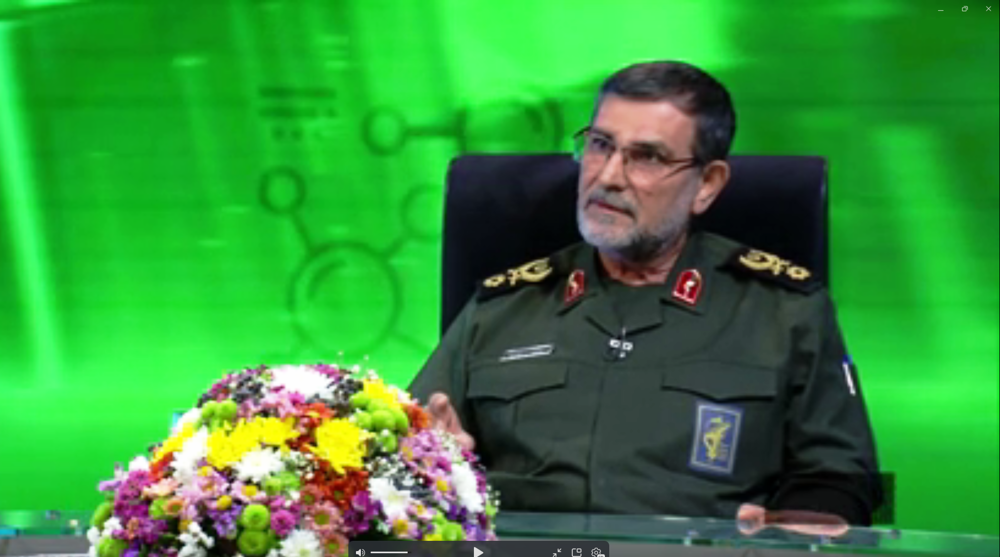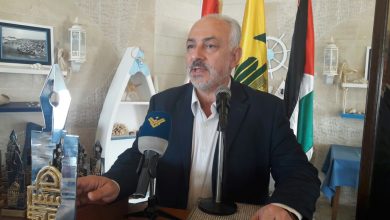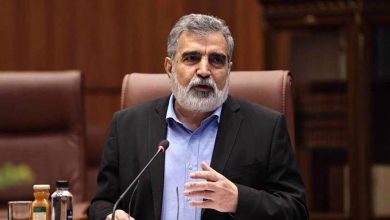Iran to reveal a supersonic cruise missile boasting a range of 2,000 kilometers: IRGC Navy Cmdr
The commander of Iran's Islamic Revolution Guards Corps (IRGC) Navy has announced that the Islamic Republic is poised to unveil a domestically-produced supersonic cruise missile boasting a range of 2,000 kilometers (1,242 miles). This development underscores Iran's ongoing advancements in enhancing its naval defense capabilities.

Rear Admiral Alireza Tangsiri announced on Sunday that Iran is poised to reveal a new projectile in the upcoming Persian calendar year, beginning March 20. This development is expected to considerably bolster the nation’s deterrence capabilities, marking a significant advancement in Iran’s naval power.
During a special televised broadcast titled “Fajr (Dawn) of Hope; Powerful Iran,” a military commander announced that Iran now possesses missiles capable of being launched from deep within its territory, thereby removing the reliance on coastal launch sites. This declaration was made in the lead-up to the 46th anniversary of the momentous 1979 Islamic Revolution.
“These advancements now enable us to directly strike targets in the Sea of Oman from the northern regions of the Persian Gulf.”
An official has confirmed that the Corps successfully conducted a launch of a cruise missile from the southern area of the western Iranian Tabas region. The missile accurately hit a target located 650 kilometers (403 miles) away, in the Sea of Oman, positioned to the south of the country.
**Strengthening Maritime and Coastal Defense**
In a demonstration of Iran’s heightened military readiness, Tangsiri announced that the nation’s entire 2,200-kilometer (1,367-mile) southern coastline has been fortified. This strategic endeavor is a joint effort involving the Islamic Revolutionary Guard Corps (IRGC), the naval forces of the Army, and the maritime division of the Basij volunteer force.
He highlighted that numerous military resources have been strategically repositioned to underground locations in elevated terrains along the coastal regions, making them resistant to the adversary’s bunker-busting munitions.
He stated that in the southern areas, the natural mountainous landscape has been utilized to protect key military facilities, guaranteeing that missiles or bombs cannot harm these assets.
**IRGC Augments Naval Operations and Influence**
The commander emphasized Iran’s growing naval capabilities, announcing that the Corps’ Shahid Mahdavi military vessel, equipped to transport helicopters and missile launchers, is currently stationed in Indonesia. This deployment is part of joint military exercises with an Iranian Army naval fleet.
The vessel recently concluded an impressive 39-day voyage, navigating to the waters near northern Australia and extending within 500 nautical miles of Diego Garcia, a strategically significant U.S. military base situated in the Indian Ocean, according to reports.
On Thursday, Major General Mohammad Baqeri, Chief of Staff of the Iranian Armed Forces, reiterated Iran’s resolve to uphold a robust and strategic presence in international waters. He highlighted the pivotal role played by Iran’s naval forces in maintaining regional security and addressing external threats.
**Iran Launches First Military Vessel Equipped with Drones**
Iran has officially unveiled its inaugural military vessel specifically designed to carry and deploy drones, marking a significant advancement in its naval capabilities. This strategic move is seen as a step towards enhancing the country’s defense and operational reach in the maritime domain.
Tangsiri highlighted another significant accomplishment within Iran’s military-industrial sector: the development of the Islamic Republic’s inaugural drone carrier military vessel.
The IRGC Navy has announced the conversion of outdated commercial vessels into advanced drone carriers, a strategy previously utilized by nations such as the United States and the United Kingdom.
“The inaugural American aircraft carrier was initially a repurposed merchant vessel. Similarly, the British have converted captured German ships for military use, and more recently, the Netherlands transferred a commercial ship to the UK for conversion into a warship. Iran has adopted a comparable strategy, effectively developing its first drone carrier,” he stated.
**Iran Develops Advanced Aircraft Arrestor Technology**
According to the commander, the Islamic Revolutionary Guard Corps (IRGC) has successfully developed expertise in aircraft arrestor technology. This advancement is crucial for decelerating aircraft and minimizing the distance required for landing, both under routine operations and in emergency situations.
He stated that this capability was once exclusive to the United States, highlighting that its adoption by the Islamic Republic underscores the nation’s growing self-reliance in advanced military technology and innovation.
**Iran’s Latest Missile Arsenal Enhanced with Artificial Intelligence**
Rear Admiral Alireza Tangsiri highlighted that Iran’s newly developed missiles are integrated with artificial intelligence and possess precision-strike capabilities. This development underscores Tehran’s dedication to achieving self-sufficiency in its defense technology sector.
Analysts suggest that Iran’s recent introduction of a supersonic cruise missile and the bolstering of its naval capabilities send a strong deterrent message to its adversaries, amid a flurry of threats directed towards the nation.
Iran’s recent advancements highlight its growing influence as a regional powerhouse, demonstrating military innovations that bolster national security and enhance strategic deterrence, observers report.







